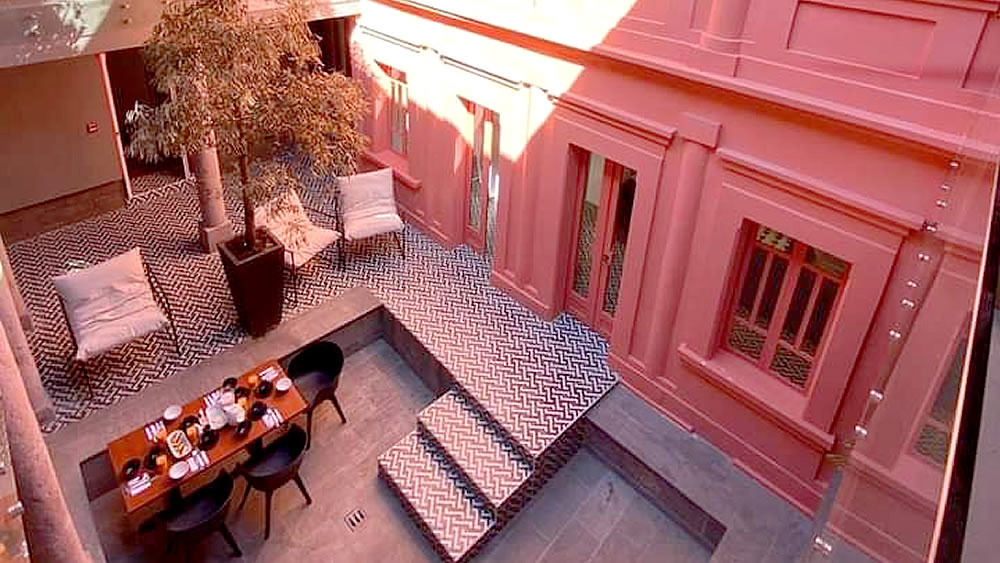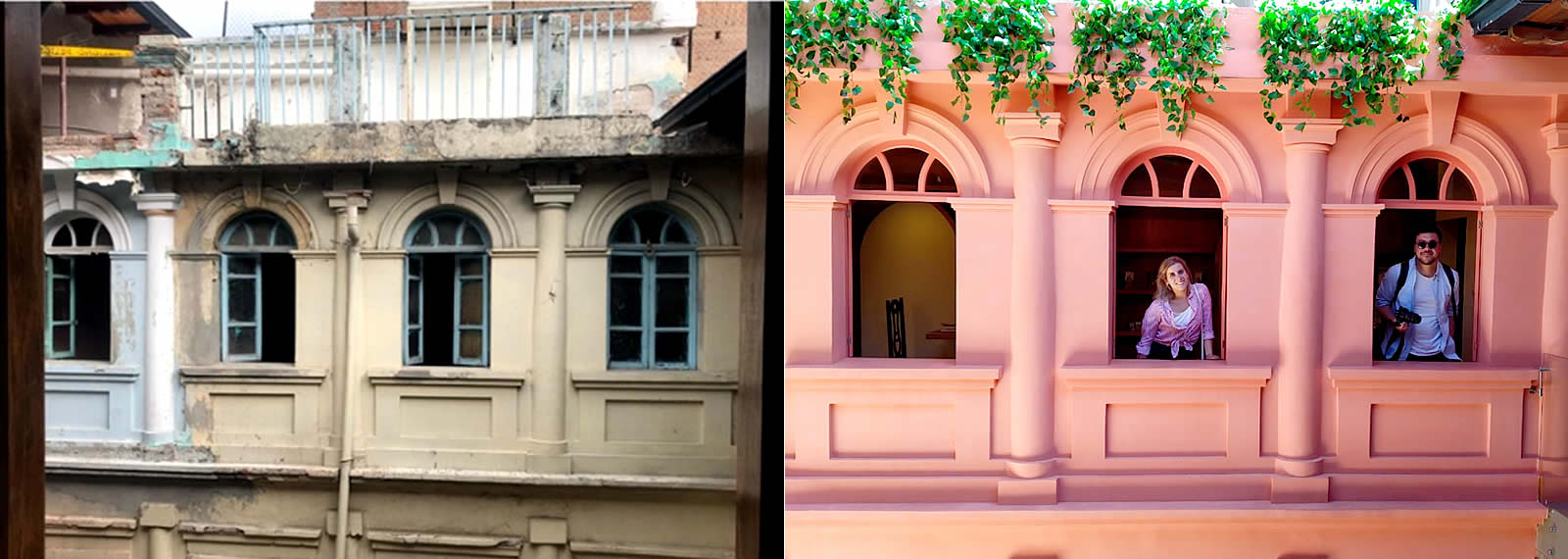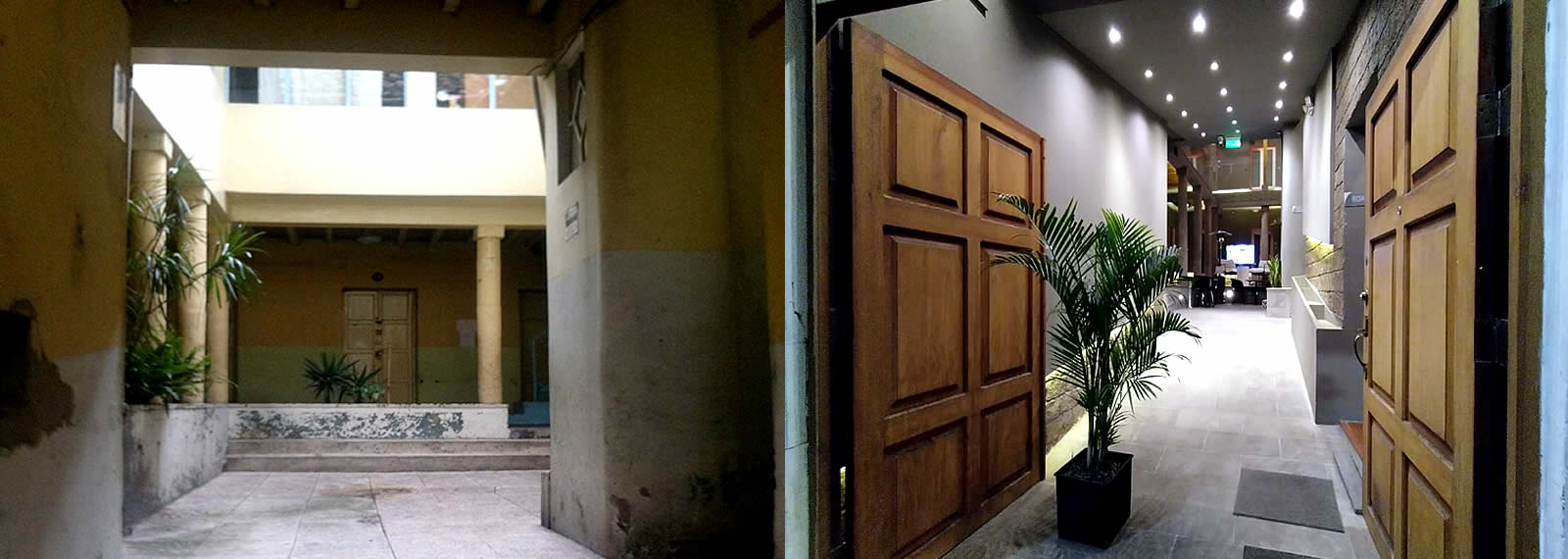
In the historic center of Quito, a World Heritage Site, stands the majestic Casa Anabela Hotel Boutique, a carefully restored building that preserves the republican air of the 19th century, in perfect harmony with the modern style. It keeps the adobe walls, reed roof, tile roof and wooden floors, respecting its original design, which makes it unique in the area.
Now it opens its doors to visitors locals and from all the world, offering them 11 cozy rooms with a view of the Virgen del Panecillo, its patio between ancient stone columns and its terrace to enjoy a good wine or coffee, served directly by its owners. You will not feel in a hotel, but in a family house, at home.

Until 2015, the building functioned as a rent house in which 11 families lived, its last owners made precarious improvised adaptations according to housing needs.
Its restoration was a challenge that Anabela Rodas and her husband took on, as new owners, who were beginning to fulfill their dream of transforming and recovering the house to make it what it is today, an architectural and design icon in the capital of Ecuador.
It was a long and complex road, but along the way they discovered invaluable elements from which new ideas were born, covering and uncovering surfaces, removing and adding pieces, with the main objective of preserving the material and immaterial wealth of the house as much as possible, whose last Formal registration dates to 1890, but it is estimated that it was built at least a hundred years earlier.
What was achieved, is a conservative but at the same time daring place, its characteristic pink color gave the final touch to its unique identity. The support and accompaniment of the Ceiling and Facade Restoration Program of the Quito Heritage Institute, directed by the architect Ibeth Jaramillo, was vital.
The interior design was in charge of the firm of architects Nicolás & Nicolás, of Nicolás López and Nicolás Vivas, who created for Casa Anabela Hotel Boutique, the República Rosa project that has received several international awards for its innovation and creativity. His ideas were reflected in the restoration work by the engineer Diego Guachamín, Anabela's husband, who led the work team that managed to compact the dreams and aspirations of all those who were involved in the project in an exceptional way.

